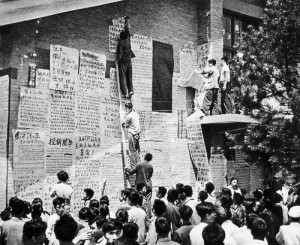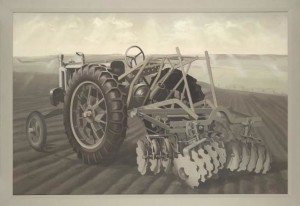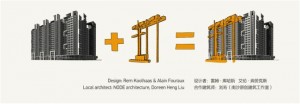Two images from Hou Hanru’s Melbourne lecture last month stayed with me. Hou is the curator of this year’s 5th Auckland Triennial, If you were to live here …
The first was an early black & white image from his student days in Beijing through the 1980s. The image he projected showed students standing on ladders pasting handwritten bill-posters all over a building—all over its façade. Hou used the image in the same way an artist might show early formative work. The picture was equal-parts building, student crowd and big-character text climbing the walls. Hou said it was the sort of activity he was involved in all the time in Beijing in the years before the events of Tiananmen Square. As a precursor it gives some practical reason for his preferences for display and process, which typically involve a melange of institutional partnerships, public excursions, interdisciplinary workshops, residencies and collaborations.
In the same week that Hou spoke at Asialink, I found myself in front of Stephen Bush’s painting Cultivator, of the same era as Hou’s student days. It’s a terrible gesture to draw equivalences too quickly, but I imagined Hou’s project and the Bush running in conceptual parallel, as method or critique of culture or civic progress. The painting has a faintly suspicious feel about it—hard to place, but an aspect that might in the 1980s have been called ‘postmodern irony’.
The second of Hou’s images that took my interest followed discussion that in contemporary China there are now something like 12,000 new museums under construction or almost completed.
This image was a diagram of how Dutch architect Rem Koolhaas planned to implant a museum in a new residential development in Guangzhou. Koolhaas and Hou had negotiated with a local developer to reposition an initial idea for a museum space, shifting it from a sequestered interior forecourt to an accessible rooftop position. Koolhaas had come up with a design that linked the rooftop museum via lifts to a street-front foyer with project spaces and studios inserted at middle height in the building. To me it is interesting too that this museum, like most new cultural initiatives in Asia, was a private initiative. From the developer’s viewpoint, the art museum helped brand the complex through the design and construction phases of the building in a way that was attractive to new residential buyers. Once well-established, I am guessing that the museum would be given over to the future collective residential ownership.
‘If you were to live here … a conversation with internationally renowned biennial curator Hou Hanru’, with Natalie King, Utopia@Asialink, Sydney Myer Asia Centre, Melbourne, 15 April 2013.




